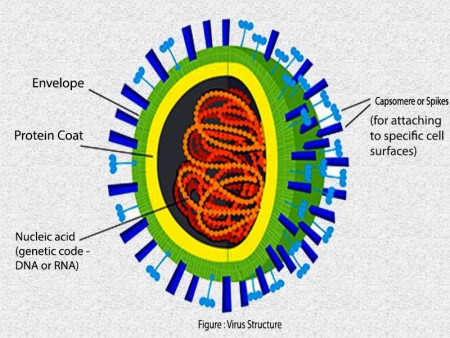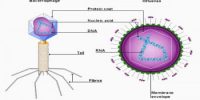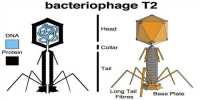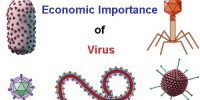Structure of virus
The virus has two parts-
1. Nucleic Acid
2. Capsid or Protein Coat

1. Nucleic Acid:
* Both DNA and RNA are found in Influenza and new castle disease virus.
* In the other organism both DNA and RNA are found together in the same cell but in case of the virus only one type either DNA or RNA is found.
2. Capsid or Protein Coat:
The protein sheath surrounding the nucleic acid is known as Capsid or protein coat. This sheath composed of innumerable protein molecules. Each of the protein molecules of the capsid sheath is known as capsomere. The capsomere molecule type is specific for the specific virus. Generally, the capsid is biologically inert, but in addition to protection to protection of the nucleic acid, it helps in infecting the host. Since capsid is a protein molecule, it acts as the antigen. It causes sneezing in common cold.
Outer Coat:
In some viruses (e.g. Influenza virus, Herpes virus, HIV etc.) there are coating outside the capsid which is composed of different organic chemicals depend on the nature of the viruses. Generally, this coating is composed of lipid, lipo-protein, carbohydrate or fatty chemicals. The nit of lipid or lipo-protein layers is called peplomere. Occasionally viruses with lipid or lipo-protein coating are called lipo-virus.
Nucleocapsid: inactive (inert) virus.
Virion: Active virus composed of nucleic acid surrounded by Capsid.
Viroid: Small broken parts of viral RNA that can spread like the virus and cause the disease to plants and animals.
Prion: Empty protein sheath of the virus, causes the various disease to human. They can make new prion by penetrating into the host genome.














